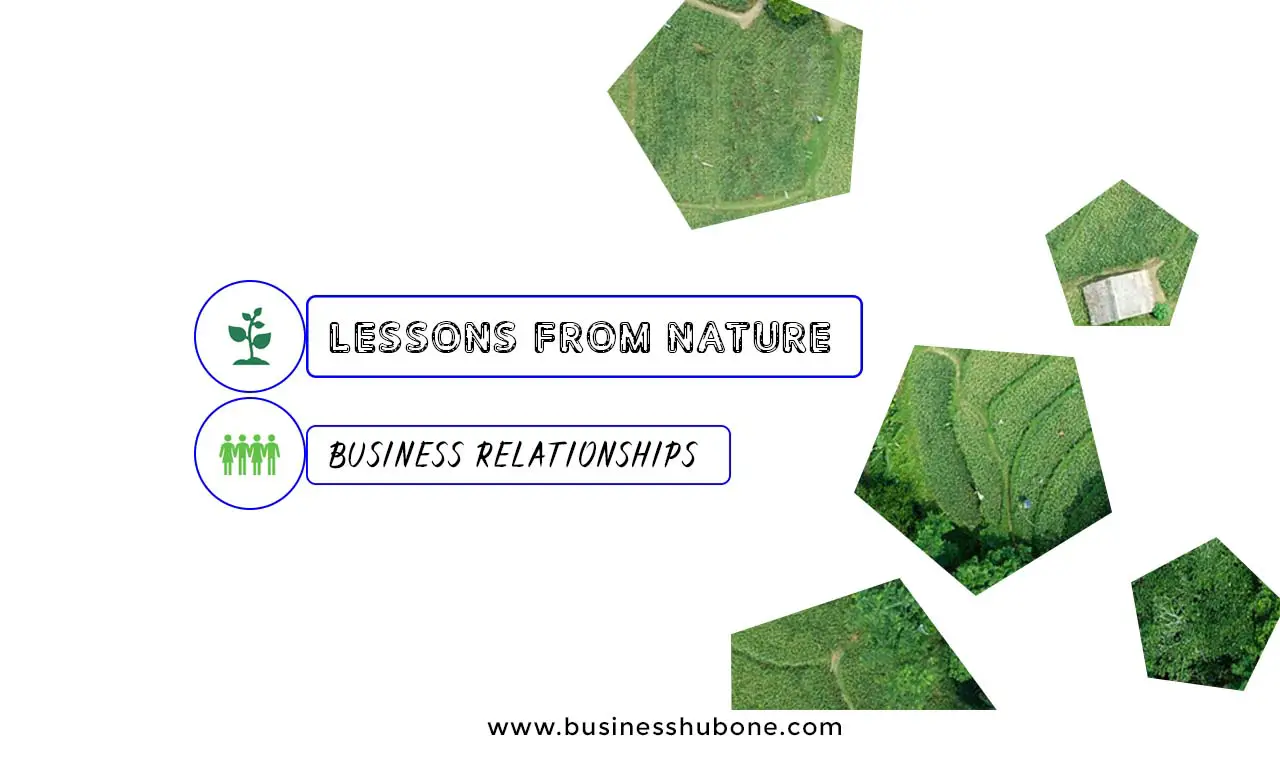Lessons From Nature: Business Relationships
Welcome to another lesson in the “lessons from nature” series!! In this lesson, I will be talking about the importance of business relationships. We all interact (relate) in one way or another with our environment. I am defining the environment as everything living or non-living that is physically distinct from our being. First, I will define relationships generally, then define business relationships. I will then touch on relationships in nature before relating them to businesses/startups.
Table of Contents
What Are Relationships?
A relationship is a state of connectedness between entities. These can be people, organisms, or even human constructs such as voltage and current. In line with this, a relationship s said to exist when there is any form of interaction/connection between distinct entities/individuals.
What Are Business Relationships?
Business relationships are relationships that exist between businesses or individuals as it pertains to business.
Relationships In Nature
Relationships are an integral part of existence d all organisms interact in one way or another. The interaction between organisms in a particular region and their environment is referred to as an ecosystem. In an ecosystem, there are producers, primary consumers, secondary consumers, tertiary consumers, and decomposers.
Although the producers may seem self-sufficient not needing to associate with any other organism, this is not true. Firstly, they absorb nutrients from the ground to enable them to produce and store energy. This is only sustainable because of the action of decomposers. Decomposers act on dead matter and cause their conversion into nutrients that can be taken up by plants. Also, some plants associate with nitrogen-fixing bacteria such as Nitrosomonas which fixes atmospheric nitrogen, thus helping the plant.
Symbiotic Relationships
Also, there may be more specific relationships between particular members of the ecosystem. And these relationships differ according to the benefits derived from such a relationship. These relationships can either be mutualism, commensalism, or parasitism. The common attribute of these relationships is that they are physical.
Mutualism is a mutually beneficial relationship between two or more different kinds of organisms in direct contact with each other. There are two types – symbiotic and non-symbiotic mutualism. In symbiotic mutualism, both organisms interact physically, and their relationship is biologically essential for survival. Whereas, in non-symbiotic mutualism, both organisms live independently but cannot survive without each other. Examples of non-symbiotic mutualism include the bee-flowering plant relationship and the clownfish-sea anemone relationship.


In commensalism, only one of the participants benefits. This benefit comes at no cost to the other participant. Members that participate in this type of relationship are called commensals. A well-known example of this type of connection is that of the egret and grazing mammals. The egrets feed on insects that are exposed by grazing.
However, in a parasitic relationship, one participant benefits at the expense of the other famous examples include parasitic fleas that feed on the blood of dogs and tapeworms that live in the intestine of mammals.

But how does this all relate to businesses and startups?
Businesses and Relationships
In the business/startup world, there is also an ecosystem where one end is an interdependence of businesses and the other is a relationship between the company and the consumer. Both systems will be considered.
Business-Business Interdependence
All businesses have to interact with one another in one way or another. This interaction may be upstream or downstream. This type of relationship is crucial for the functioning of the business in that no business can exist alone. For example, a restaurant will have to work with suppliers of different raw food items and other things needed. Another example I am going to cite is that of smartphone companies. A lot of companies in the smartphone production industry do not make all the components themselves. But instead, rely on other companies. This particular example cuts across most of the tech world.
Businesses can have vertical or horizontal relationships with one another. A vertical relationship is formed between companies in different sections of the supply chain. Whereas, a horizontal connection is created by partnerships/collaboration between businesses with similar customers who are not necessarily competitors.
While it is worth of note that some companies do backwards and forward integration, still there is almost always a need to interact with other businesses.
Business-Consumer Interdependence
Businesses exist to meet the needs of customers. A company that will succeed must solve a particular problem for the target market. A lot of startups which do not solve a specific issue, or get outcompeted by a better solution usually die out. You can read more about what causes the death of businesses here.
The above paragraph establishes the importance of customers to the existence and survival of a business. Therefore, it only makes sense for a company to develop good relations with its customers. This can be done in a variety of ways, including getting and using customer feedback.
Mutualism, Commensalism, and Parasitism in Business
As mentioned earlier in this post, in mutualism, both participants benefit from the relationship. The relationship between the business and its customers can be classified as being mutualistic. The customers get a solution to a problem, while the company gets paid for providing the solution, and both parties benefit. This also applies to business-business interactions, where one business offers products/services to another.
In commensalism, one of the parties (the commensal) benefits, while the other is unaffected. A type of business relationship that can be described as having this attribute is the mentor-mentee relationship Mentors guide and offer advice to their mentees which makes them better, without negatively affecting the mentor.
Any type of relationship which subtracts/has a negative impact on your business should be considered parasitic. This can result from unfavourable business terms or a direct theft of intellectual property. Such (parasitic) relationships must be quickly addressed to avoid “stories that touch” :).
How To Build Good Business Relationships
Depending on the business, a strong network may range from customers and clients to suppliers, buyers, outsourced service providers, the government, media, or even competitors. While the context may vary, all require the same foundation of amicability and trust.
The following are ways to build business relationships
- Networking – Business exchange programs. Ycombinator and other startup hubs.
- Investing in relationships
- Identify and nurture productive relationships
Importance of Maintaining Healthy Business Relationships
Although it has been stated that business relationships can make or break a business, here are a couple of reasons for having good business relationships.
- Trust– Establishing and maintaining healthy business relationships with both businesses and customers helps to build trust. Once business partners and customers trust you/your business, it will cause a ripple effect that will ultimately lead to business success.
- Reputation – Forging a strong business relationship leads to the establishment of a good reputation. This goes hand-in-hand with the first point, which is building trust.
- Referrals – This will come as a direct consequence of being trusted and having a strong reputation.
- Opportunity – Apart from being referred, having healthy relationships creates more opportunities for the business.
Final words
In conclusion, it is useful for founders, business owners, and managers to always maintain good relationships, both with other businesses and consumers. This will go a long way in facilitating the success of the business/startup. Cheers!!!






